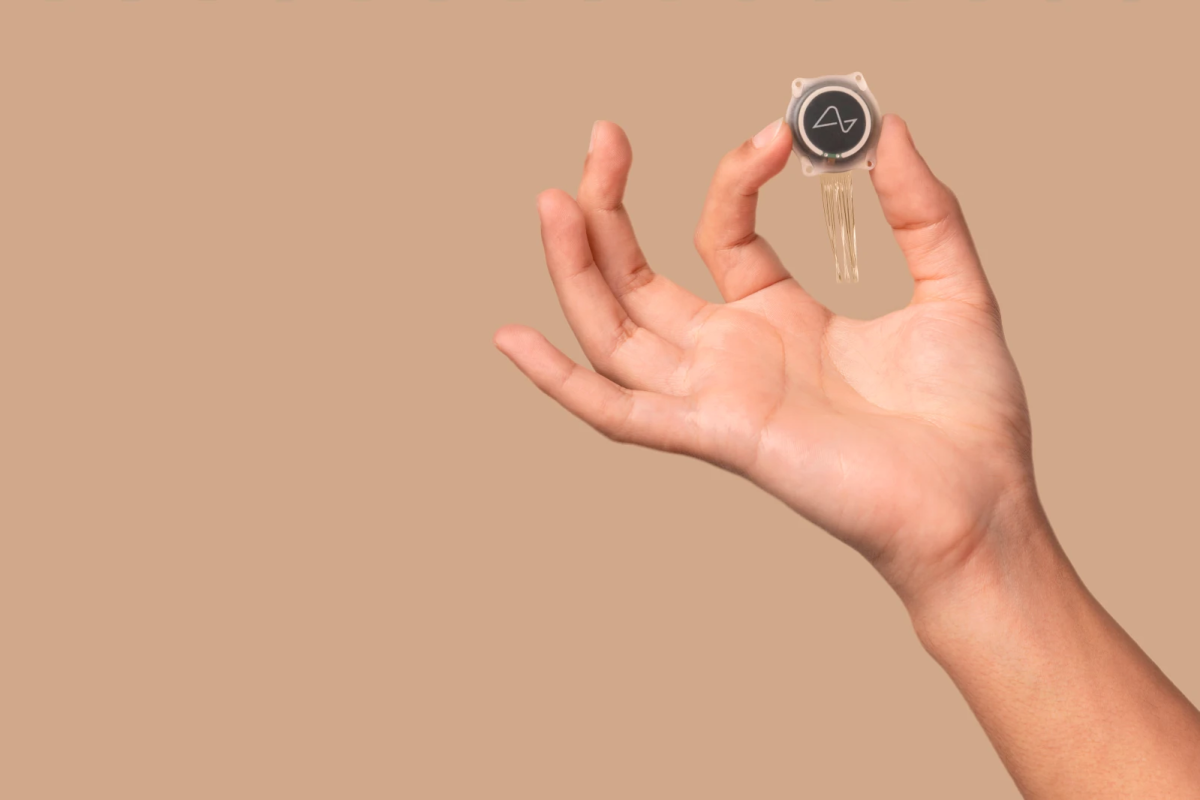
what is described is actually crude and what is lilely neat is the software which does the actual work of gathering data and interpretation.
now if we could crudely trigger muscle work we will get somewhere. Again we are likely no where close at all.
Our first research target should be atrophied muscle tissue. This sould also stimulate overall healing as well.
Neuralink fits its first human patient with a brain interface
By Loz Blain
January 29, 2024
https://newatlas.com/computers/neuralink-first-human-patient/
Neuralink's N1 implant: a brain-computer interface installed by a robot surgeon
Neuralink
"The first human received an implant from Neuralink yesterday and is recovering well." Elon Musk has announced a milestone moment at his brain-machine interface company, after a surgical robot successfully installed its first human brain chip.
Four and a half years ago, Musk said Neuralink hoped to have its first implants machine-installed in humans by the end of 2020. Adjusted for Musk's famously optimistic approach to timelines, the company has delivered right about on time.
Neuralink finally received FDA approval last year, after weathering a storm of criticism over its treatment of animals after a Reuters report cited current and former employees, as well as leaked internal documents, to reveal more than 1,500 animal deaths and excessive, unnecessary cruelty at the startup.
The identities of its first human patients have not been revealed, but participants in this first "Prime" study had to be more than 22 years old, quadriplegic due to spinal cord injuries or ALS, and with no history of seizures, other active implants like pacemakers, or plans for ongoing MRI scans.
The N1 implant is coin-shaped, and about the size of a US quarter. It replaces a chunk of a patient's skull, sitting flush with the bone around it underneath the skin, with 64 tiny, flexible wires pushed right through the brain's tough, protective dura layer and into the cortex underneath by a high-precision surgical robot called the R1.
These wire probes open up 1,024 channels of two-way communication between the brain and the implant, which then communicates wirelessly with computers and devices. With a little training, this allows patients to operate these devices directly with their minds, as famously demonstrated by early animal patients playing "Monkey Pong."
Monkey MindPong
Neuralink, along with many other neural implant companies taking different approaches to brain-computer interfaces, is beginning with the goal of opening up electronic communications to people trapped in unresponsive, paralyzed bodies. But once the device, the installation and training processes are well understood, this kind of technology could go in all sorts of directions.
There's no reason why it couldn't be used to allow these quadriplegic patients to control electric wheelchairs, for example, or indeed robotic prosthetic limbs that could allow them to interact with the world in ways that were previously impossible. At higher resolutions, these implants could potentially route messages around nervous system damage to reconnect with lower-body limbs, restoring some sensation as well as motor control. They could interface with the visual cortex to bring sight to the blind.
And the ultimate goal is to open the technology up to the uninjured masses. The human brain currently communicates with computers through the treacle-slow interfaces of keyboards, touch screens, voice recognition software and screen-based reading. Musk's intention is to remove that roadblock, enabling high-bandwidth, ultra-fast data transfer between hardware and meatware, accelerating the evolution of humankind into cyborg hybrids that might have a chance of keeping up with the AI systems of the future.
By that stage, all the dreams and nightmares of a cyberpunk future are on the table; perhaps you'll be able to fit third and fourth arms, complete with touch-sensitivity and as much strength as your frame can handle. Or a whole new spider-body with its own oxygen supply, suitable for life on Mars.
No comments:
Post a Comment